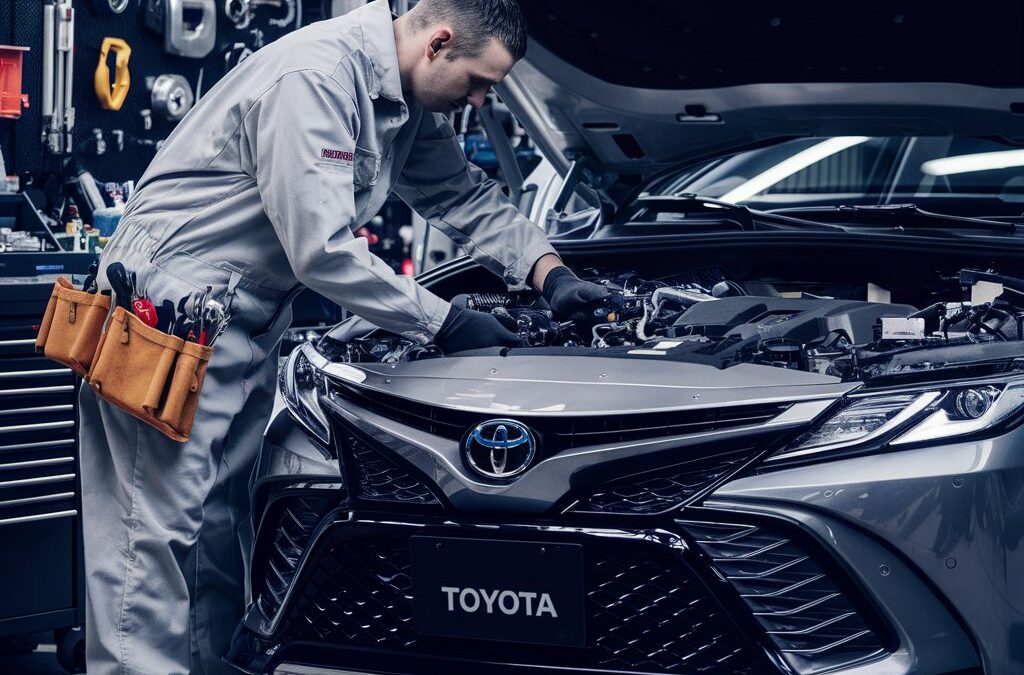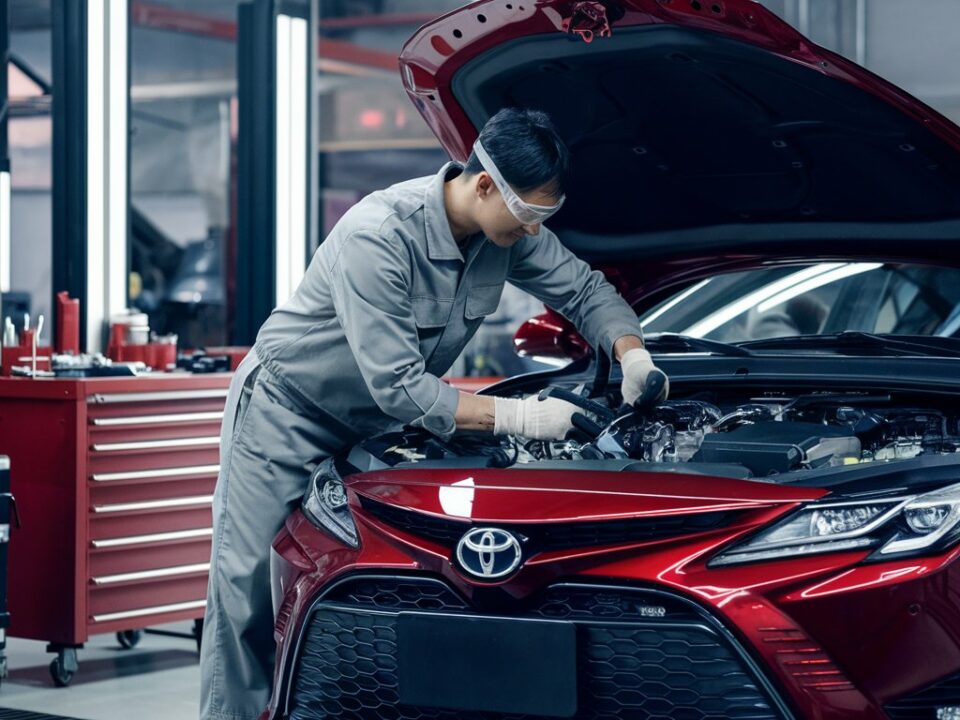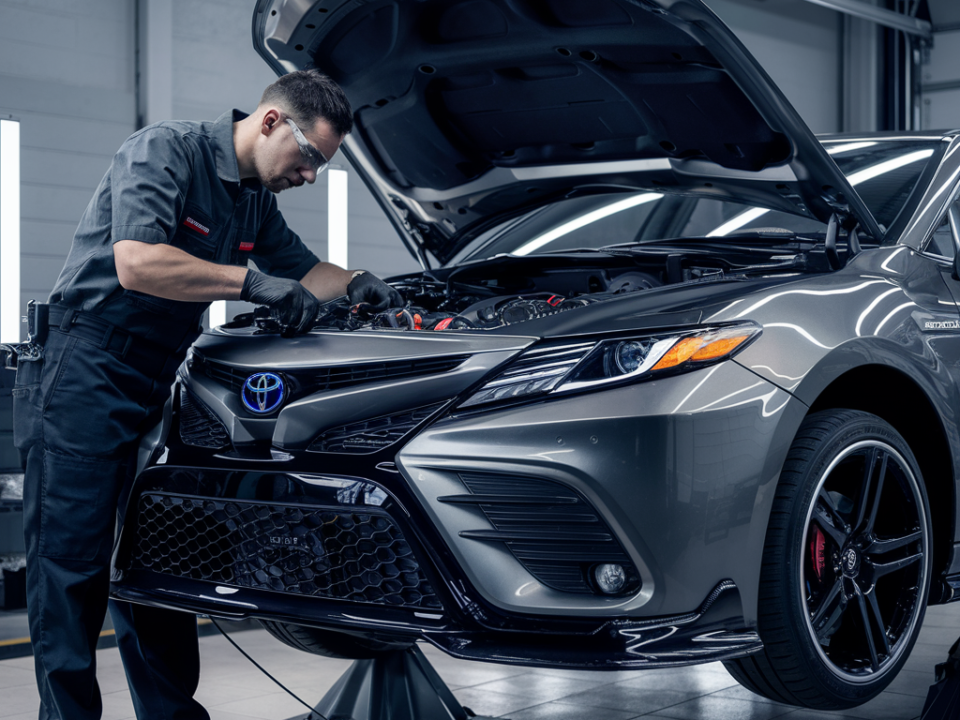
Comprehensive Guide to Replacing a Toyota Head Gasket
August 14, 2024
How to Detect and Repair Oil Leaks in Your Toyota
August 14, 2024In the realm of automotive maintenance, particularly for Toyota mechanic, the integrity of timing belts and chains is paramount. A failure in these components often leads to catastrophic engine damage. It is thus essential to recognize the early signs of wear or failure, such as irregular noises, engine misfires, or oil leaks around the timing cover. Precise diagnostic procedures and the use of specialized tools are required for a thorough evaluation. However, what remains less discussed is the nuanced approach needed during the replacement process, where slight deviations in alignment can lead to inefficiencies or further damage. The question then arises: what are the best practices for ensuring the accurate installation of new timing belts and chains in Toyota engines, and how can one mitigate the risks of incorrect installation?
Signs of Timing Belt Failure
Identifying early signs of timing belt failure in Toyota engines is crucial for preventing costly repairs and maintaining optimal vehicle performance. As fellow Toyota enthusiasts and guardians of our vehicles’ longevity, understanding the nuances of timing belt deterioration can forge stronger bonds between us and our trusted rides.
The timing belt, a critical component made of rubber and high-tensile fibers, orchestrates the synchronization between the engine’s camshaft and crankshaft. Early detection of its wear is pivotal. One telltale sign is a ticking noise emanating from the engine. This acoustic signal suggests that the belt is becoming loose or is on the verge of snapping.
Additionally, a misfiring engine often indicates that the timing belt’s integrity is compromised, disrupting the engine’s precise firing sequence. Visual inspection can also reveal cracks, fraying, or glazing on the belt surface – clear indicators of an aged belt that requires immediate attention.
Another symptom includes oil leakage from the timing belt cover, which can degrade the belt’s material if not addressed promptly. For those of us committed to the care of our vehicles, staying vigilant about these signs is not just maintenance; it’s a testament to our dedication to our Toyota community.
Steps for Chain Replacement
While the timing belt issues are significant, it’s equally important to address the procedure for replacing a timing chain in Toyota engines. The replacement of a timing chain, unlike the belt, often involves a deeper level of engine disassembly due to its placement and integration within the engine assembly.
First, ensure the engine is cool and disconnect the battery to secure a safe working environment. Remove the engine cover and ancillary components such as the air intake assembly and coolant hoses to access the timing chain cover. This step demands meticulous attention to detail to avoid damage to surrounding components.
Next, remove the timing chain cover by unfastening all bolts. It’s crucial to keep track of each bolt’s location as they may vary in size and thread. With the cover removed, assess the timing chain and related components such as the gears, tensioner, and guides. Check for wear or damage, confirming the necessity of replacement.
Carefully remove the old timing chain, ensuring to align the timing marks on the crankshaft and camshaft gears for precise timing. Install the new chain, replacing the tensioner and guides to prevent future issues.
Reassemble all components in reverse order, double-checking each step for accuracy. After assembly, conduct a thorough test to ensure the engine runs smoothly with the new chain in place.
In conclusion, timely identification and replacement of timing belts and chains in Toyota mechanic are imperative to prevent catastrophic engine failures. Research indicates that timing belt failures are responsible for approximately 5% of engine breakdowns annually.
By adhering to meticulous maintenance protocols and understanding the critical signs of wear and damage, vehicle owners can significantly enhance the longevity and reliability of their engines, ensuring optimal performance and safety on the roads.
Next article Prev article



